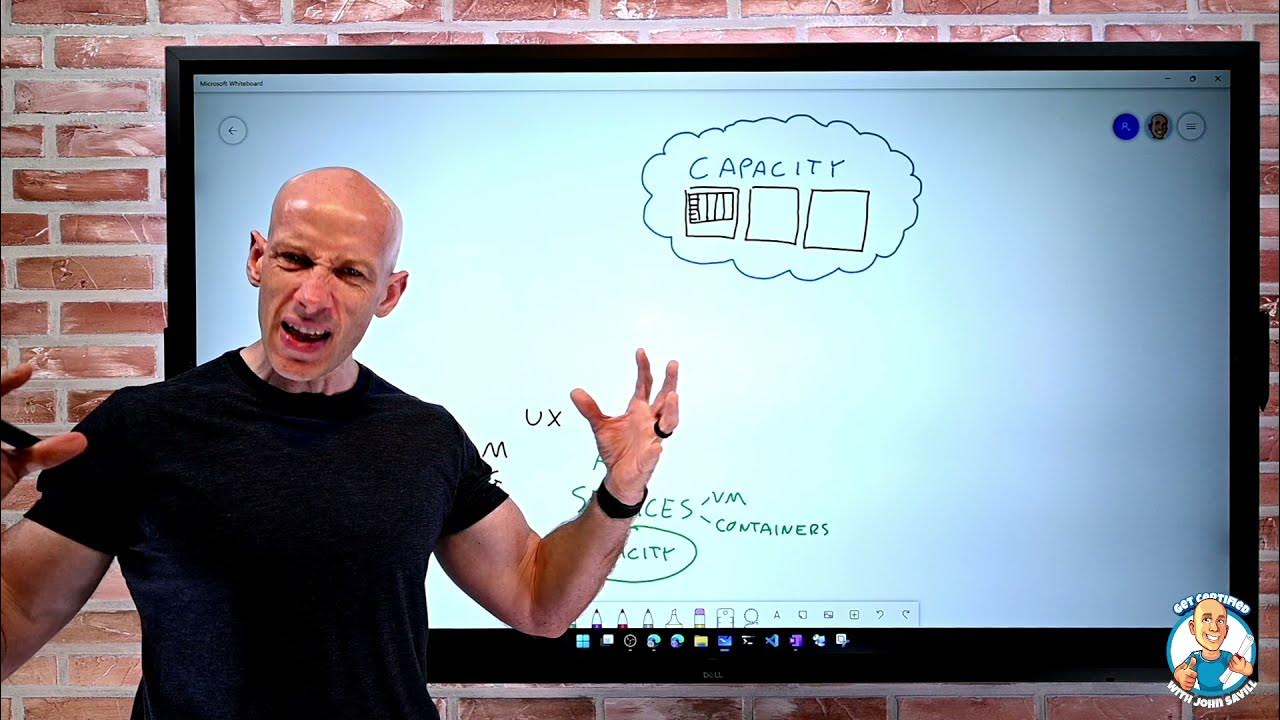Economics of choosing a Cloud platform for an organization based on application requirements, eco
Summary
TLDRThis video discusses the economics of selecting a cloud platform for organizations based on application requirements, business needs, and constraints. It covers five common mistakes IT teams make when executing cloud strategies, such as assuming all platforms offer the same services and underestimating costs. The session highlights the importance of choosing the right cloud provider, focusing on pre-built services, flexibility, and security. Additionally, it explains how to build a business case for cloud economics, including considerations for ROI, total cost of ownership (TCO), and migration costs.
Takeaways
- 🔍 All cloud platforms do not offer the same services, which can lead to mistakes if not researched properly.
- ⚠️ Platform as a service (PaaS) is not a catch-all solution and may not address every capability gap.
- 💻 Non-standard or open-source cloud platforms might not be cost-effective and can be difficult to manage.
- 💸 Cloud subscriptions vary by vendor in terms of pricing and services offered, so cost comparison is critical.
- 🏗️ Different cloud vendors have unique architectures, even if the basic structure is similar across platforms.
- 🛠️ Selecting the right cloud platform should focus on well-known, standardized platforms to save time and money.
- 🔐 Security is a key consideration when choosing a cloud platform, ensuring enterprise-grade protection.
- 💼 When making a business case for cloud economics, consider ROI (Return on Investment) and TCO (Total Cost of Ownership).
- 📊 Benchmarking current data center costs is essential for understanding potential cloud savings.
- 💡 Cloud migration costs, including labor, app integration, and testing, should be factored into the overall decision.
Q & A
What are the key elements discussed in the session about cloud platform economics?
-The session covers common mistakes in cloud strategies, how to select the right cloud platform, and how to make a business case for cloud economics, including ROI and TCO.
What are some common mistakes IT teams make when developing and executing cloud strategies?
-Common mistakes include assuming all cloud platforms offer the same services, thinking platform-as-a-service (PaaS) is a catch-all solution, relying on non-standard development languages, misunderstanding subscription costs, and not recognizing architectural differences between cloud providers.
Why is it important to select the right cloud platform for an organization?
-Choosing the right cloud platform helps save time and money, allows faster innovation, avoids vendor lock-in, ensures compatibility with business applications, and provides a secure environment that meets governance standards.
What factors should organizations consider when selecting a cloud platform?
-Organizations should consider the platform’s standards, availability of pre-built services, integration with existing applications, flexibility to move between platforms, and the level of enterprise security offered.
How can companies make a business case for cloud economics?
-Companies can make a business case by following a process that includes benchmarking current data center costs, estimating cloud infrastructure costs, and calculating migration costs. This helps determine ROI and total cost of ownership (TCO).
What is the significance of benchmarking in cloud economics?
-Benchmarking involves calculating the costs of operating the current data center, including capital, labor, maintenance, and software licensing costs. This provides a baseline for comparing cloud infrastructure costs.
What are the key components of cloud cost estimation?
-Cloud cost estimation includes basic pricing from the vendor, ongoing fees, labor and training costs, integration and testing costs, as well as security and compliance costs.
What is the role of migration cost in cloud platform decisions?
-Migration cost involves determining how much it will cost to move operations to the cloud, including labor, integration, testing of apps, and potential expenses for switching cloud providers.
Why is security a critical factor when selecting a cloud platform?
-Security is essential to protect the cloud investment and ensure business data is safe. The platform must meet the highest enterprise security standards to avoid risks to the business.
How does choosing a cloud platform with pre-built services benefit organizations?
-Choosing a provider with pre-built services allows organizations to innovate quickly while maintaining governance and standards. It reduces the need for custom development and speeds up deployment.
Outlines

This section is available to paid users only. Please upgrade to access this part.
Upgrade NowMindmap

This section is available to paid users only. Please upgrade to access this part.
Upgrade NowKeywords

This section is available to paid users only. Please upgrade to access this part.
Upgrade NowHighlights

This section is available to paid users only. Please upgrade to access this part.
Upgrade NowTranscripts

This section is available to paid users only. Please upgrade to access this part.
Upgrade NowBrowse More Related Video

NIST CSF vs ISO 27002 vs NIST 800-171 vs NIST 800-53 vs Secure Controls Framework (SCF)

AWS Tutorials - 48 - Auto Scaling With Load Balancer - Load Balancer with Auto Scaling - AWS (Hindi)

WTF is CNAPP?

Cloud Computing Explained

What is DevOps?

Identify the Benefits of Cloud Computing - AZ-900 Certification Course
5.0 / 5 (0 votes)